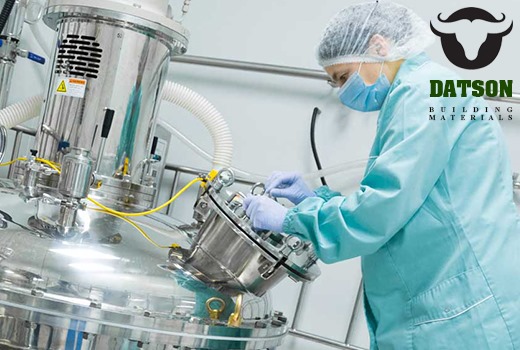Introduction to Bentonite and Its Medical Applications
bentonite clay wound healing is a type of clay formed from volcanic ash, and for many years, it’s been used in skincare, digestion, and detox routines. But lately, researchers and healthcare professionals have started to pay serious attention to its potential in medical wound care. This interest isn’t just about going “natural” bentonite’s properties genuinely offer some impressive benefits when it comes to healing.
Its super absorbent nature makes it ideal for cleaning out wounds and keeping them dry when needed. People have used it in traditional medicine for generations, and now modern science is beginning to catch up. Bentonite clay wound healing has become a topic of growing discussion—not just among holistic health fans, but in clinical settings too. The real attraction lies in how bentonite interacts with wounds: drawing out toxins, minimizing infection, and promoting a healthier environment for the skin to repair itself.
Mechanisms of Bentonite in Wound Healing
When a wound form, your body immediately starts trying to repair the damage. This means fighting off infection, stopping bleeding, and rebuilding tissue. Bentonite powder plays a supportive role in this complex process. Once mixed with water, bentonite swells up and turns into a soft, gel-like substance. When applied to a wound, this texture helps keep the area moist, which is crucial too dry and the tissue cracks, too wet and healing slows.
But there’s more. Bentonite’s negatively charged molecules attract positively charged particles like bacteria and harmful metals. This helps cleanse the wound by pulling out unwanted substances. It can also create a slight pH shift that makes the wound environment less welcoming for microbes.
Some early studies suggest bentonite may stimulate cells that are directly involved in tissue repair, which means it could do more than just “clean” it might actively encourage your body to heal faster. All these things together explain why bentonite clay wound healing is gaining so much attention in the medical community.

Antibacterial and Anti-inflammatory Properties of Bentonite
Bacteria and inflammation are two of the biggest barriers to wound healing. If you’ve ever had a wound get red, swollen, or infected, you know how quickly things can go south. That’s where bentonite clay wound healing shines. It doesn’t kill bacteria in the same way antibiotics do, but it binds to them and helps pull them away from the wound, lowering the risk of infection naturally.
And inflammation? Bentonite clay wound healing appears to have a calming effect on irritated tissue. People who use it topically often report a soothing, cooling sensation. That’s especially helpful when dealing with wounds that are already inflamed or painful. In cases where someone has a cut that’s gotten infected, bentonite clay for infected wounds may help reduce redness and swelling while also keeping bacteria under control.
Bentonite-Based Wound Dressings and Composites
In today’s market, you’ll find bentonite being incorporated into a wide range of wound care products. It’s no longer just a powder in a jar. Scientists have figured out how to blend bentonite with gels, films, and polymers to make wound dressings that are both easy to use and highly effective.
These dressings are particularly useful for wounds that are slow to heal, like diabetic ulcers or pressure sores. The bentonite absorbs fluids from the wound (known as exudate), reduces odor, and helps maintain a cleaner surface for healing. It can also reduce how often a dressing needs to be changed, which is better for both comfort and cost.
Clinical Studies and Experimental Evidence
It’s one thing to say a natural remedy might help it’s another to back it up with real research. Thankfully, bentonite is beginning to build a body of clinical and experimental support. Lab studies have shown that wounds treated with bentonite tend to heal faster, stay cleaner, and show fewer signs of infection compared to untreated wounds.
Animal research, particularly in diabetic models, has found that wounds close more quickly when bentonite is applied. The clay seems to promote the growth of new skin and blood vessels both essential for wound recovery. Bentonite clay for wound healing isn’t just folklore anymore; there’s genuine data emerging to support its effectiveness.
Advantages and Limitations of Using Bentonite in Wound Care
There are a lot of reasons people are turning to bentonite for wound management. It’s natural, generally safe, and easy to use. It’s also relatively cheap compared to synthetic treatments, which makes it an appealing option for clinics or countries with limited resources. Plus, its multifunctionality drawing out bacteria, reducing inflammation, and keeping the wound moist means it works on several fronts at once.
That said, it’s not perfect. The biggest concern with bentonite is purity. Not all bentonite clays are the same, and some may contain impurities or even trace heavy metals, depending on how they’re mined and processed. Only high-quality, medical-grade bentonite should ever be used on the skin, let alone open wounds.
Another limitation is the lack of large-scale human clinical trials. While early data is promising, healthcare professionals need more evidence before bentonite can be formally recommended in guidelines. Also, if used improperly, bentonite could dry out a wound too much or stick to healing tissue, which might interfere with the natural repair process.
Future Perspectives in Bentonite-Based Therapies
Looking ahead, the future of bentonite in wound care looks bright. Researchers in Datson are exploring ways to engineer bentonite at the nanoscale, creating tiny particles that can be used to deliver medication directly into the wound. These smart materials could release drugs in response to infection or inflammation, offering highly targeted care with fewer side effects.
There’s also interest in combining bentonite with other natural ingredients like silver, honey, or aloe to create dressings that are both powerful and gentle. These combinations could offer broader healing benefits, especially for patients with chronic or complicated wounds.
As sustainability becomes a bigger focus in healthcare, bentonite has another edge: it’s natural, biodegradable, and widely available. That makes it a strong candidate for developing eco-friendly wound care products that don’t sacrifice effectiveness.
We’re also likely to see more innovation in wearable wound dressings that incorporate bentonite into breathable, long-lasting materials. These smart dressings could monitor wound conditions in real-time and even notify patients or caregivers when it’s time for a change.


